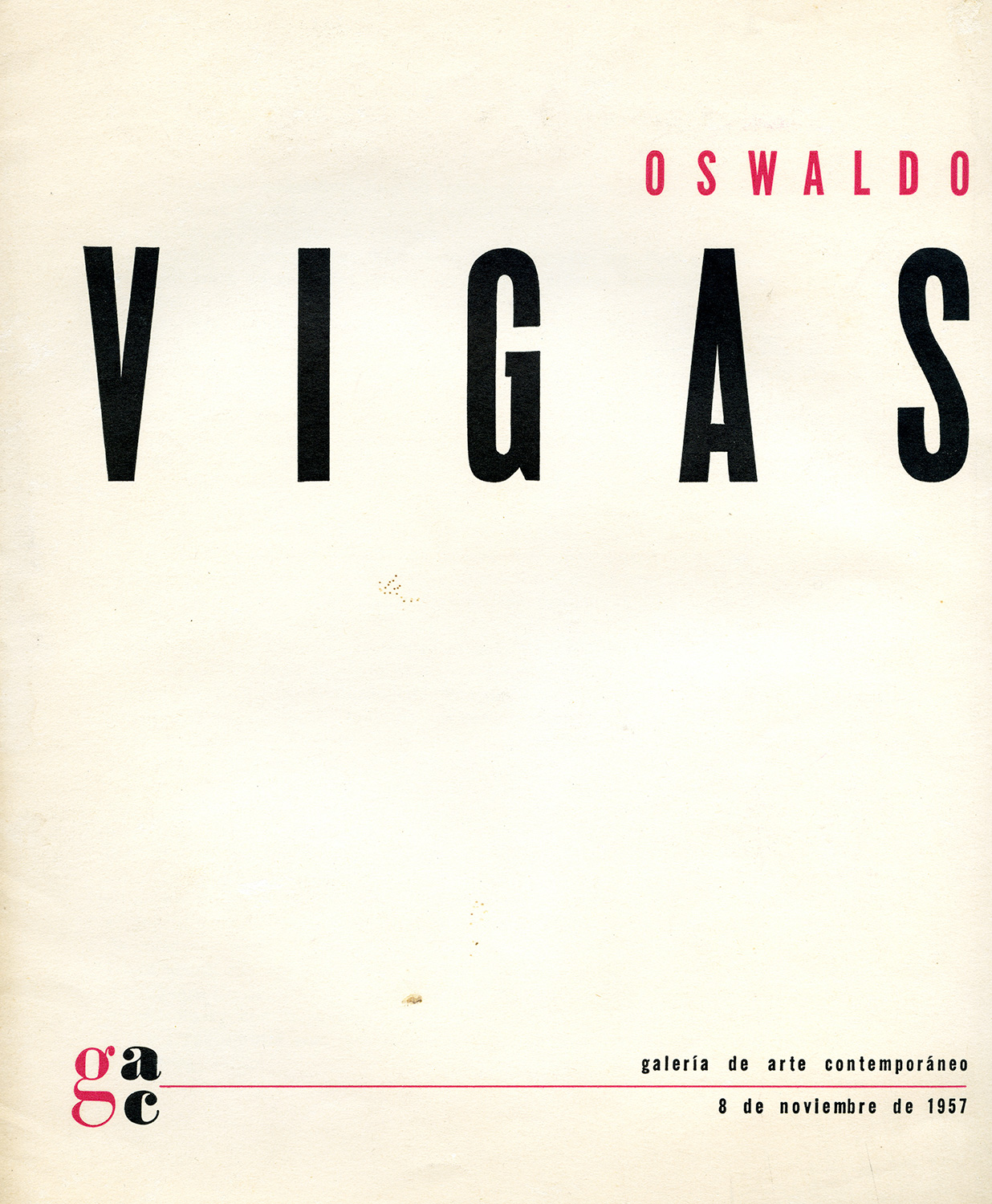Oswaldo Vigas
Galería de Arte Contemporáneo, Caracas, Venezuela.
November 1957
Gaston Diehl
What is distinctive about an exhibition, when it has at least the sufficient degree of affirmation, is that it exactly defines what might be called “the spiritual coordinates” of the evolution of the artist. No doubt, in Oswaldo Vigas' case, the work gathered here lends itself better to this criterion in relation to the present moment, as well as to previous years.
The very nature of these works, under the sign of an apparent spontaneity and treated almost like annotations or studies, seems to encourage us to look for this direct presence in them, the immediate dialogue that the author wanted to establish. The impressive unity that reigns over the show imposes itself at first glance; the infinite variety of a work that retains its nascent freshness prevents any dogmatism, the eloquent power of a structure where the black bursts and gives rhythm to the living flame of colors, everything contributes to highlight the free fullness of the means of expression Vigas has at his disposal today. His plastic, simple and bereft, is always directed by an intense interior animation, a real hymn to life where every nuance of his rich sensitivity can settle without difficulty. For those who know the painter's profound personality, it is useless to precise that this is not a slight improvisation resulted from an exalted lyricism, it is rather an art of meditation and tension no longer accepting the gratitude of the game of harmonies more than the formal stylization.
The artist's past, his long and patient evolution despite his relative youth, reflects his sincerity and demands. The security he manifests today has been nourished by the multiplicity of the experiences lived in Paris. In spite of certain opalescence, his art is rooted in the real, but followed by successive transpositions; he uses nothing more than the power of suggestion of the plastic elements, taken from the deepest human resonances.
Before reaching this tense, tortured expression of a clear monumentality, Vigas had to proceed to a progressive liberation of himself, of his technique, ripping the easy effects away, abandoning a too descriptive figuration, subjecting himself to the strict discipline of a rigorous scheme of forms, temporarily giving up the attractive seductions of the colored matter. His previous exhibition was the sign of many disciplines and it admirably showed us that he has supported them with a rare clairvoyance of which he has managed to get the most benefit to give more conciseness, more strength and a personal accent to his language. Let's not anticipate on a secure future. This balanced and generous art, driven by a lucid intelligence, is widely open to all the horizons of man, and therefore it will be constantly ready to join all future conquests.
There is no other way to painting than to make the most of the interior enrichment of the being.


